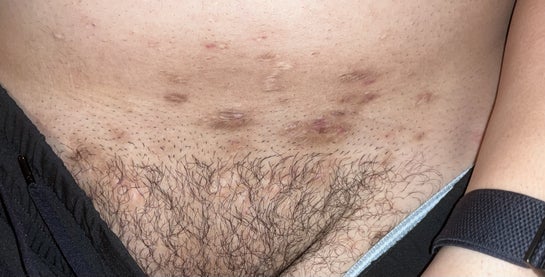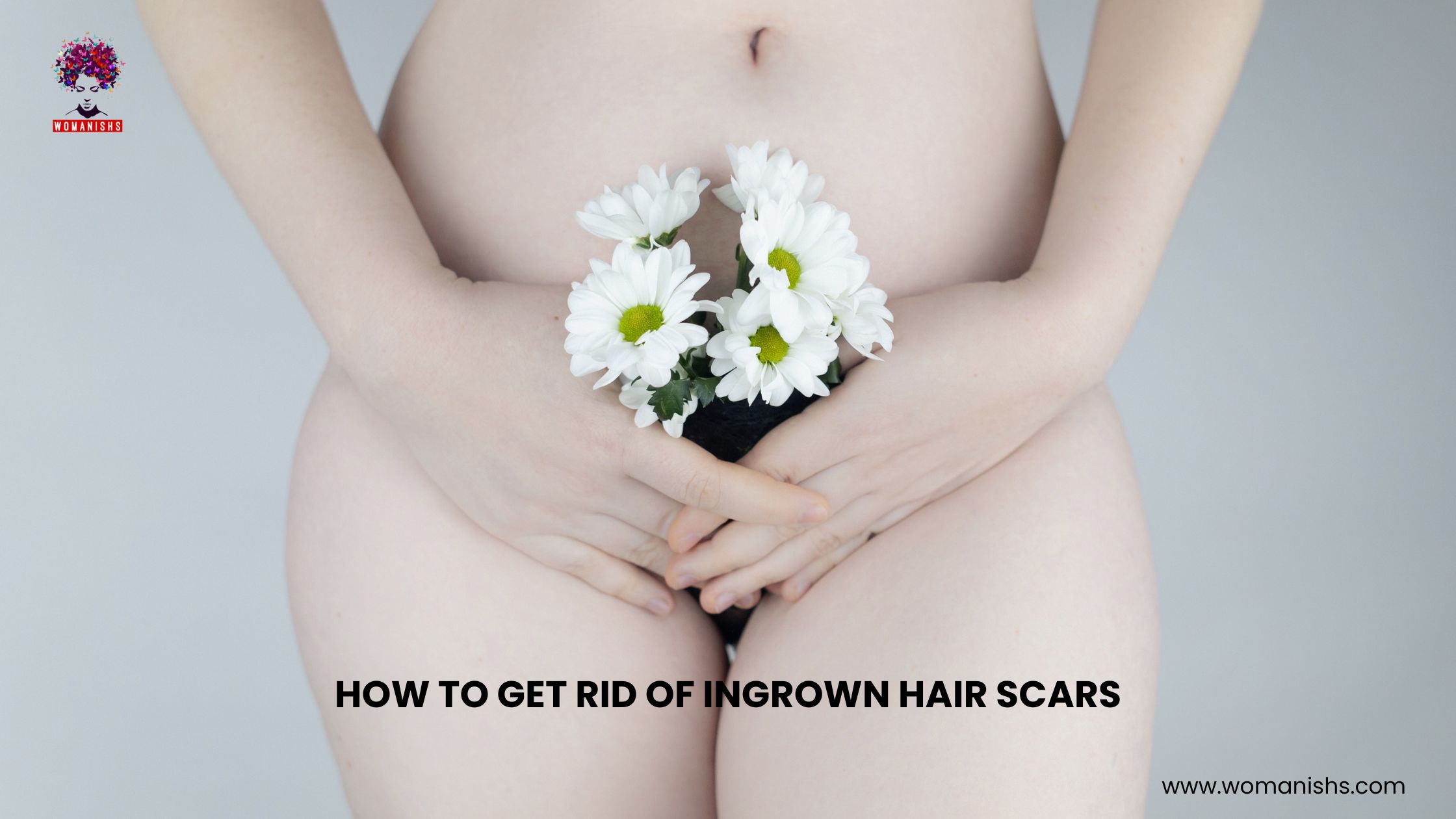Ingrown hairs are more than a nuisance of hair removal; they can produce stubborn scars affecting the way your skin looks. Ingrown hairs leave behind scars in the form of dark marks, pitted scars, or raised bumps. Fortunately, ingrown hair scars can fade with the right approach. In this guide, you will find information on effective treatments, home remedies, and preventative measures to help you eliminate ingrown hair scars for good.
What are ingrown hair scars?
Before discussing treatment, let’s first talk about what ingrown hair scars are. When a hair curls back or grows sideways into the skin, it causes inflammation and redness, and sometimes infection, which makes a raised bump or pimple-like lesion. If you pick at it or pop it or if it gets infected, it can scar.
There are typically three different types of scars caused by ingrown hairs:
- Hyperpigmentation (dark marks)
- Hypopigmentation (light spots)
- Keloid or hypertrophic scars (raised/thick scars)
Each of the three acts very differently and requires a slightly different approach to treatment, but their common goal is to achieve smooth, even-toned skin.
Read More :- 5 Common very Early Signs of Pregnancy
Reasons behind Ingrown Hair Scars:
- Friction or frequent shaving
- Tight clothing that irritates your skin
- Improper hair removal techniques (again, mostly shaving or waxing)
- Scratching, picking, or popping bumps “goodbye!”
- Inflammation from an infected hair follicle
- Knowing the reason is important since prevention is key to treating your current scars as well as avoiding new scars.

How to Get Rid of Ingrown Hair Scars?
Do you know How to get rid of ingrown hair scars? Here are 5 effective ways on how to treat and fade ingrown hair scars.
Exfoliation: The first step is to start exfoliating and removing dead skin to allow for proper skin cell renewal. There are two main purposes for exfoliating. Exfoliating helps slough off dead skin; the accumulation of dead skin traps ingrown hairs and leaves dull-looking skin.
- Gently scrub the area with some type of gentle scrub (sugar, oatmeal). Do this 2-3 times a week.
- Some chemical exfoliants (glycolic acid or salicylic acid AHA/BHA) are way more effective at fading hyperpigmentation.
- Avoid harsh scrubs; if you irritate the skin, especially when serious scarring is present, you will not only aggravate the scar, but you can cause more irritation.
Tip: always moisturize after exfoliation to avoid overly dried or flaky skin.
Topical Treatments for Dark Spots: If you are experiencing hyperpigmentation aka brown markings/discolorations (as well as possibly red marks), there are a few topical ingredients with evidence-based results.
- Niacinamide – has been shown to reduce inflammation as well as lighten dark spots.
- Vitamin C – can help brighten skin tone as well as promote collagen production.
- Retinoids – speed up cell turnover so that discoloration is less likely to stick around.
- Azelaic acid – is especially effective for post-inflammatory pigmentation.
- Hydroquinone (2%)- is a potent skin-lightening agent for example: it is over-the-counter, available by prescription, or compounding pharmacy.
Tip: Always wear SPF every single day for the foreseeable future while using any of these treatments. Sun exposure will hyperpigment dark spots and undo your hard work.
Use Scar-Fading Creams for Textured Scars: For those raised, bumpy ingrown hair scars, try using scar-specific treatments.
- Silicone gel sheets or silicone gel cream (ex: Mederma, ScarAway) – these may flatten and reduce scars over time.
- Onion extract – found in most scar gels gel (ex: Mederma); this may help with the scar texture.
- Ingredients such as Allantoin and Panthenol – higher doses of these ingredients help with skin healing and slow down scarring.
Tip: Be consistent for 8-12 weeks before expecting any visible improvement.
Natural Home Treatments (for Less Severe Scarring): If you are the natural treatment type, then here are some more gentle remedies:
- Aloe Vera Gel- will cause reduction in inflammation, as well as increasing healing.
- Diluted Tea Tree oil- has antimicrobial properties, therefore can reduce swelling and redness.
- Rosehip Seed Oil- has some vitamin A and essential fatty acids. It is well known for the reduction of scarring.
- Lemon Juice- contains vitamin C, but be careful, it can irritate sensitive skin, and increase sensitivity to sunlight.
Tip: Natural remedies work slowly and can be useful for new or less severe scarring. Always patch tests before full application.
Medical Treatments (for Stubborn Scars): If you’ve waited long enough and tried everything at home, maybe it’s time to seek professional help. Dermatologists have a number of procedures too.
- Chemical Peels: Use powerful acids to remove the top layer of skin from your body. Excellent for new dark spots, and for shallow scabs.
- Microneedling: This is a common method where little needles cause micro injuries to restore collagen production. It works well for pigmentation and pitting scarring.
- Laser: Can target pigmentation or directly target scar tissue. Seems effective, but often can be quite expensive, and the best results may require 3 or more treatments.
- Microdermabrasion: Very gentle skin polishing treatment that smooths skin texture, and can reduce shallow marks.
Tip: Always consult a dermatologist before going for any medical treatment.
How Long Does it Take for Ingrown Hair Scars to Fade?
Healing time and fading time will depend on the depth of the scar and your skin type.
- Dark spots that you develop from ingrown hair can take about 2–6 months to fade if you use the proper skincare products that are suited for your skin type.
- Deeper scars (textured) can take anywhere from 6–12 months or maybe longer.
- Using professional intensity treatments with repeated sessions movement can also help speed up fading time but may also take some time.
In all of this, consistency is important because you obviously are not going to turn around and have this completely fixed overnight.
How to prevent ingrown hairs and scarring in the future?

Foremost in all situations, prevention is always the best method. Here’s how to avoid getting any more ingrown hairs in the first place:
- Use proper techniques for removing hair: shave in the direction of hair growth. Use a clean, sharp razor and never dry shave. Always use a shaving gel or cream! If shaving is repeatedly causing these problems then consider switching to epilation, laser hair removal, or depilatory creams.
- Exfoliate on a regular basis: this will help prevent hairs getting caught and trapped under dead skin.
- Moisturize every day: softer skin is less likely to develop ingrown hairs or scarring.
- Avoid picking or squeezing: I know it’s hard but this is the number one thing that causes scarring!
- Wear looser clothing: especially after hair removal because tight clothes will just increase friction against the area and trap sweat on your skin causing bumps.
While ingrown hair scars can be annoying, they are not permanent. With patience, diligence, the appropriate skin care, and potential professional support, you can reduce the appearance of any scars and achieve smoother, more even skin. The most important part? Treat your skin all the time, maintain the routine, and always practice prevention after hair removal.
So whether you are dealing with old scars, or trying to stop new ones, I hope these steps will get you on the path to a better looking and feeling skin.


